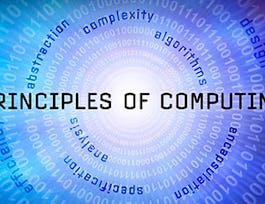This course can also be taken for academic credit as ECEA 5361, part of CU Boulder’s Master of Science in Electrical Engineering degree.



Hardware Description Languages for FPGA Design
This course is part of FPGA Design for Embedded Systems Specialization


Instructors: Timothy Scherr
Sponsored by University of Michigan
37,995 already enrolled
(579 reviews)
What you'll learn
Explain the role of HDLs in design entry and verification for FPGAs and ASICs
Utilize HDL software tools for FPGA development
Skills you'll gain
- Quality Management Systems
- Electronic Hardware
- Application Specific Integrated Circuits
- Quality Control
- Electrical and Computer Engineering
- Hardware Design
- Electronic Systems
- Verification And Validation
- Computer Engineering
- Field-Programmable Gate Array (FPGA)
- Product Quality (QA/QC)
- Quality Assurance and Control
- Electrical Engineering
- Quality Management
- Quality Assurance
Details to know

Add to your LinkedIn profile
1 quiz, 5 assignments
See how employees at top companies are mastering in-demand skills

Build your subject-matter expertise
- Learn new concepts from industry experts
- Gain a foundational understanding of a subject or tool
- Develop job-relevant skills with hands-on projects
- Earn a shareable career certificate


Earn a career certificate
Add this credential to your LinkedIn profile, resume, or CV
Share it on social media and in your performance review

There are 4 modules in this course
This module introduces the basics of the VHDL language for logic design. It describes the use of VHDL as a design entry method for logic design in FPGAs and ASICs. To provide context, it shows where VHDL is used in the FPGA design flow. Then a simple example, a 4-bit comparator, is used as a first phrase in the language. VHDL rules and syntax are explained, along with statements, identifiers and keywords. Finally, use of simulation as a means of testing VHDL circuit designs is demonstrated using ModelSim, a simulator software tool. Programming assignments are used to develop skills and reinforce the concepts presented.
What's included
10 videos3 readings2 assignments4 programming assignments1 discussion prompt
In this module use of the VHDL language to perform logic design is explored further. Many examples of combinatorial and synchronous logic circuits are presented and explained, including flip-flops, counters, registers, memories, tri-state buffers and finite state machines. Methods of hierarchical design and modular design techniques are explained and demonstrated. How to create test benches is described as a means for design verification. Students are giving ample opportunity to practice and refined their design technique using the programming assignments.
What's included
10 videos2 readings1 assignment5 programming assignments
This module introduces the basics of the Verilog language for logic design. It describes the use of Verilog as a design entry method for logic design in FPGAs and ASICs, including the history of Verilog's development. Then a simple example, a 4-bit comparator, is used as a first phrase in the language. Verilog rules and syntax are explained, along with statements, operators and keywords. Finally, use of simulation as a means of testing Verilog circuit designs is demonstrated using ModelSim, a simulator tool. Programming assignments are used to develop skills and reinforce the concepts presented.
What's included
9 videos2 readings1 quiz1 assignment4 programming assignments
In this module use of the Verilog language to perform logic design is explored further. Many examples of combinatorial and synchronous logic circuits are presented and explained, including flip-flops, counters, registers, memories, tri-state buffers and finite state machines. Methods of hierarchical design and modular design techniques are explained and demonstrated. How to create test benches is described as a means for design verification. Students are giving ample opportunity to practice and refined their design technique by writing code as required by the programming assignments.
What's included
10 videos2 readings1 assignment5 programming assignments
Instructors

Offered by
Why people choose Coursera for their career




Learner reviews
579 reviews
- 5 stars
60.17%
- 4 stars
27.41%
- 3 stars
6.55%
- 2 stars
2.93%
- 1 star
2.93%
Showing 3 of 579
Reviewed on Jun 4, 2020
This is very good course , but i found some little missing details related to reading materials .
Reviewed on Jan 15, 2020
Great experience. Nice learning opportunity. However, please include assignments which are little more diverse and difficult.
Reviewed on Oct 6, 2020
I think this is a good start in learning how to write VHDL and Verilog.
Recommended if you're interested in Physical Science and Engineering

Rice University

Dartmouth College

Open new doors with Coursera Plus
Unlimited access to 10,000+ world-class courses, hands-on projects, and job-ready certificate programs - all included in your subscription
Advance your career with an online degree
Earn a degree from world-class universities - 100% online
Join over 3,400 global companies that choose Coursera for Business
Upskill your employees to excel in the digital economy




